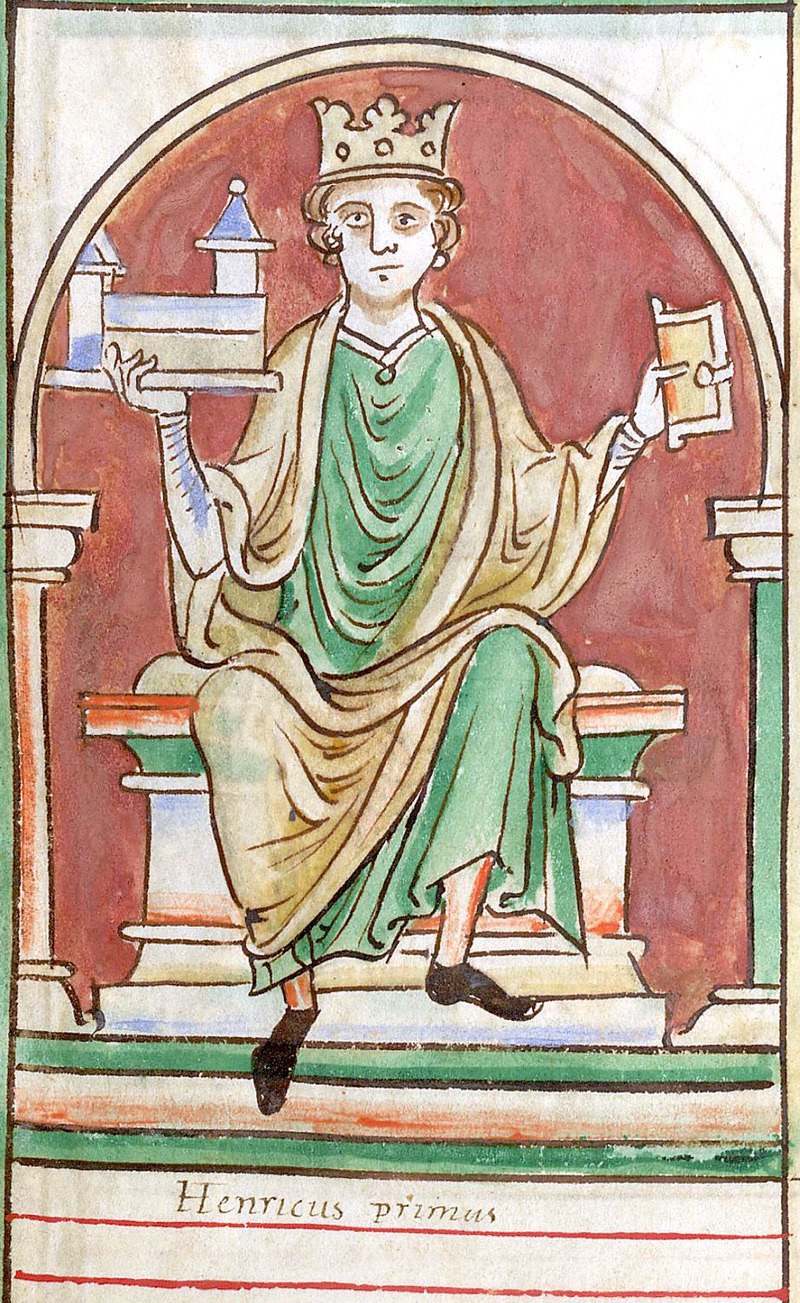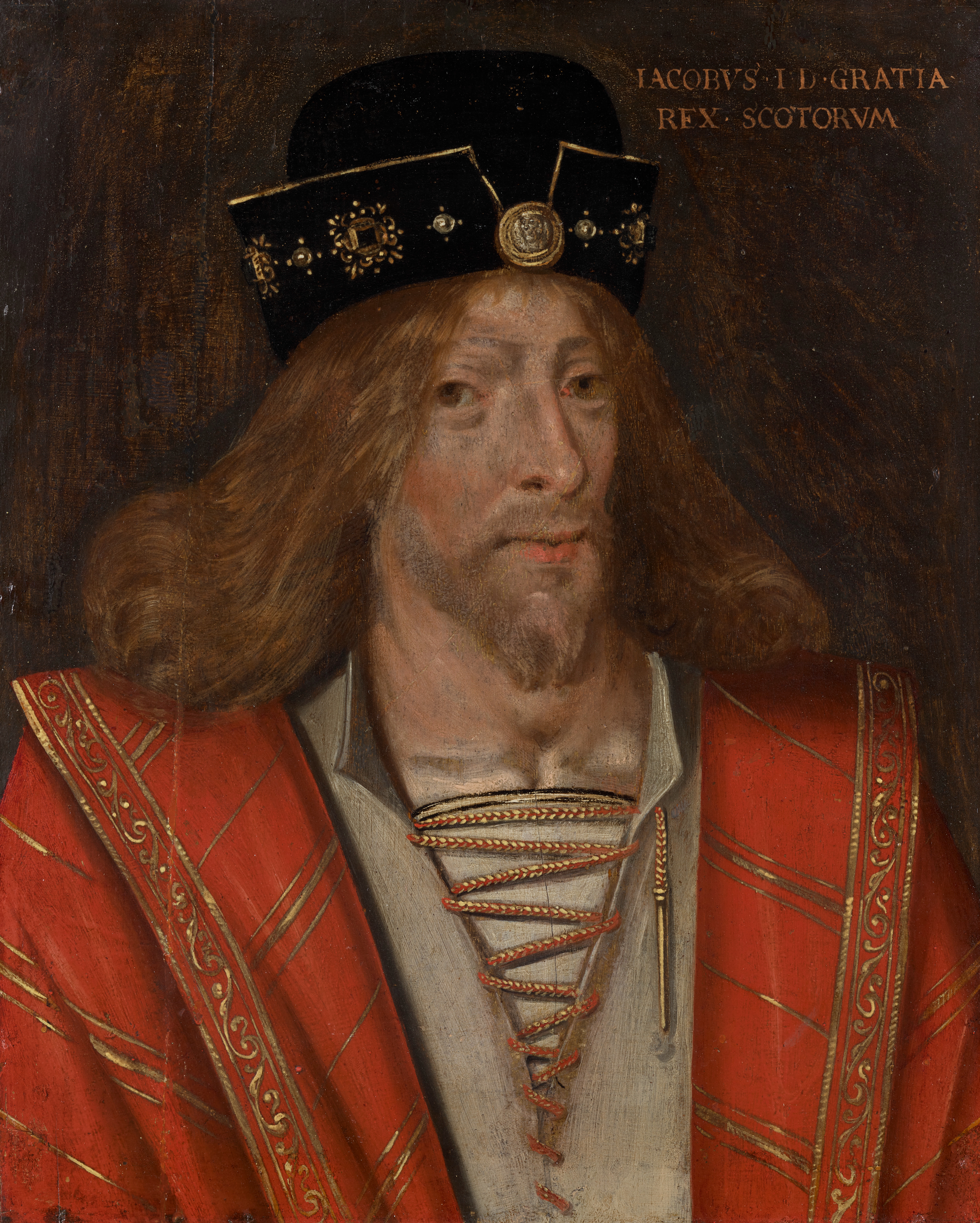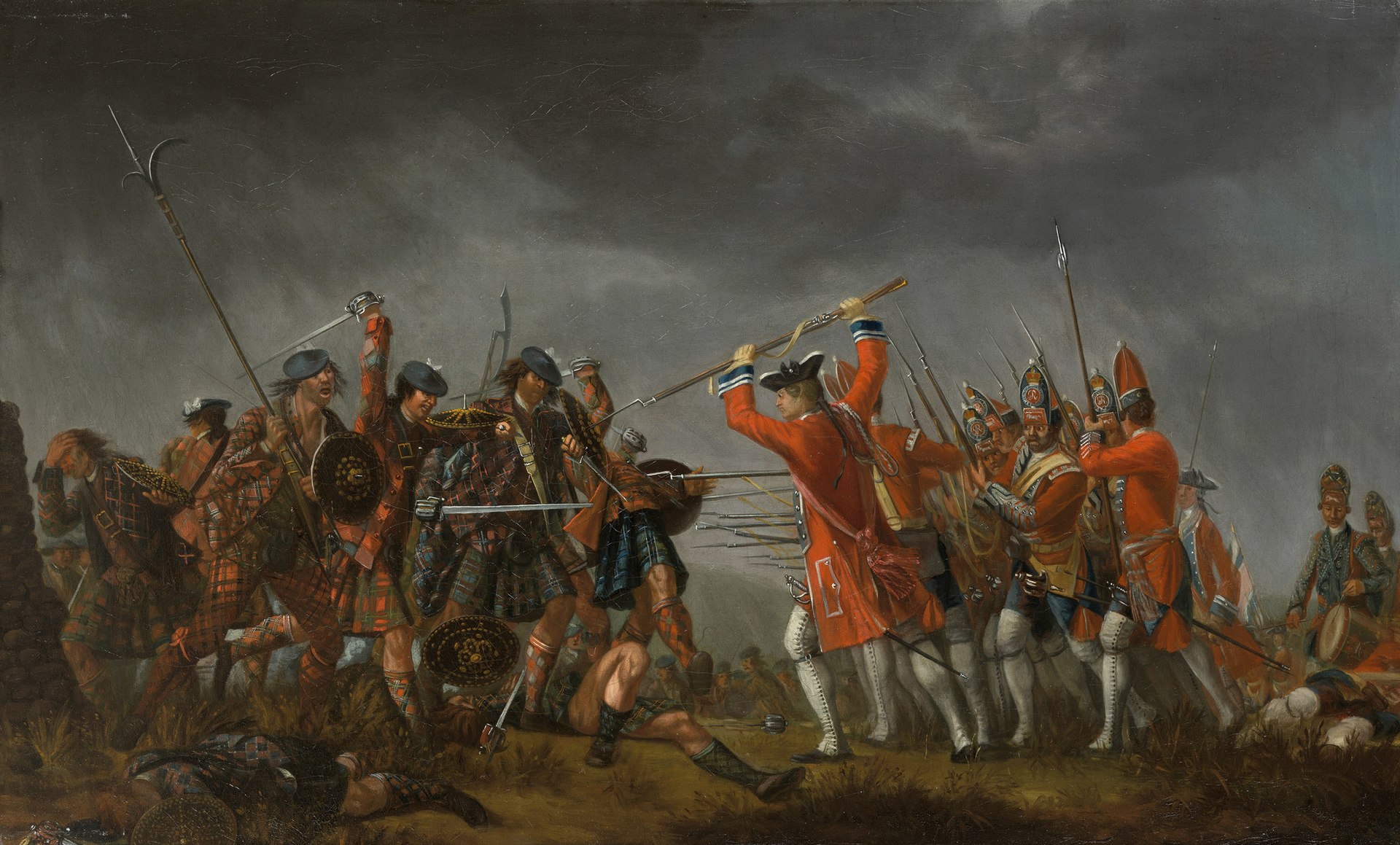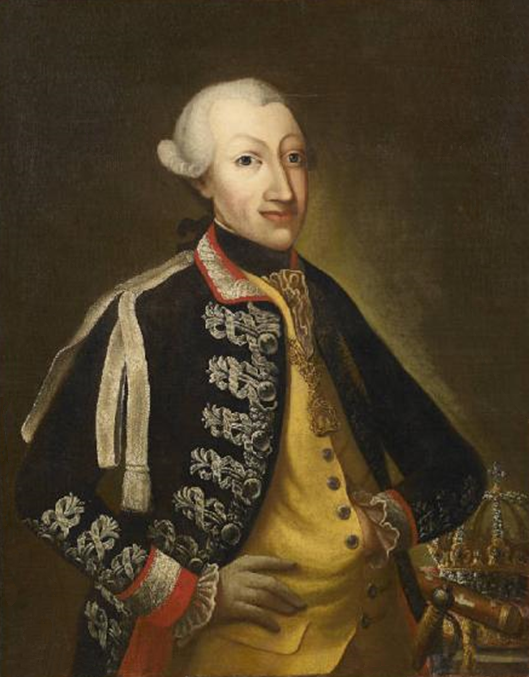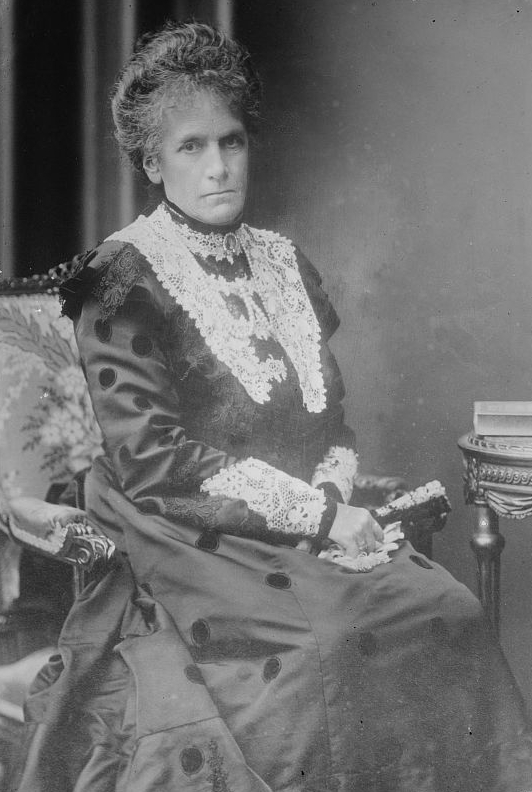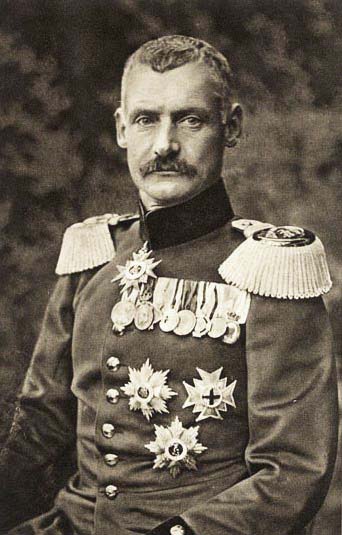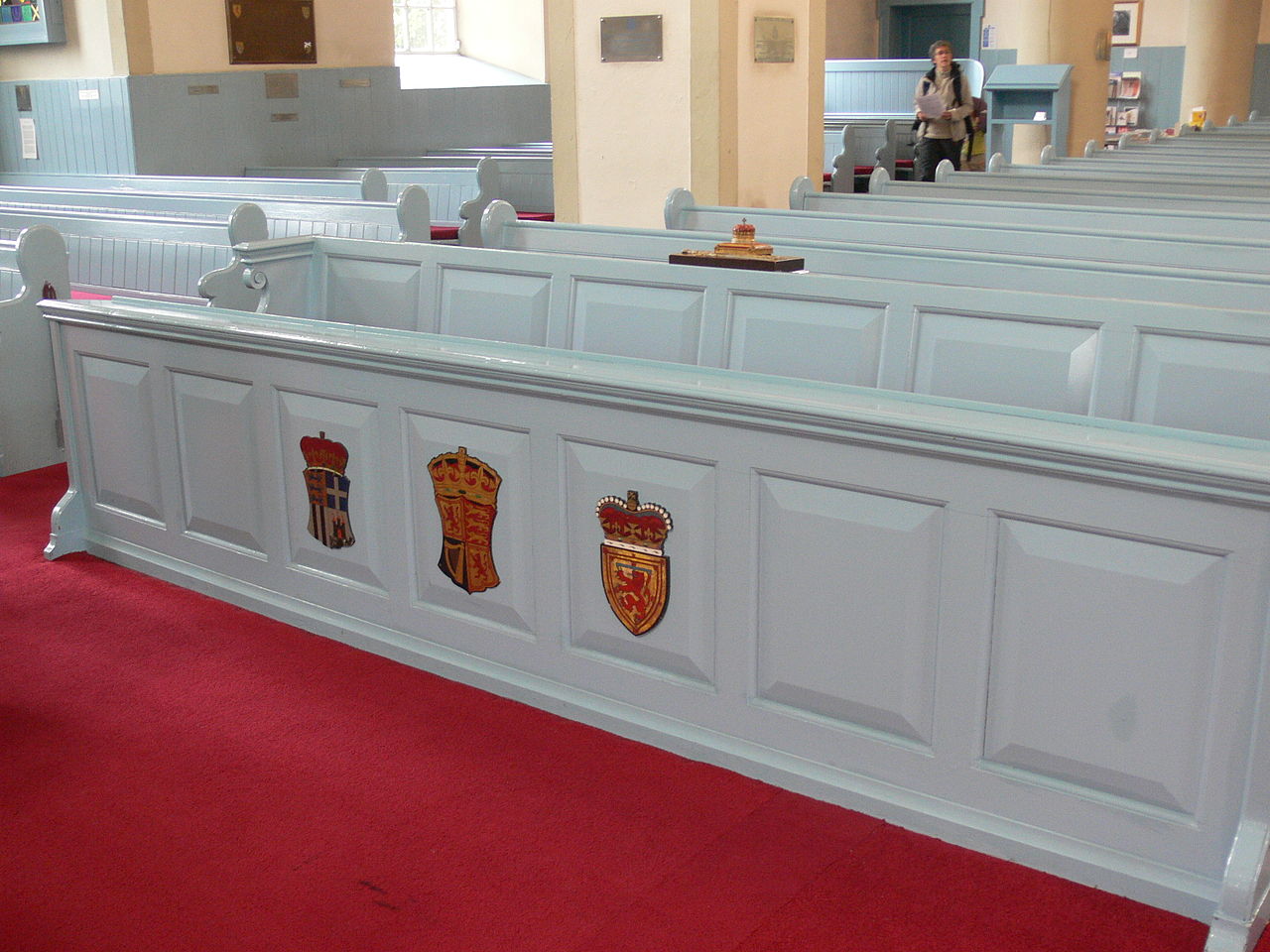by Susan Flantzer
© Unofficial Royalty 2023
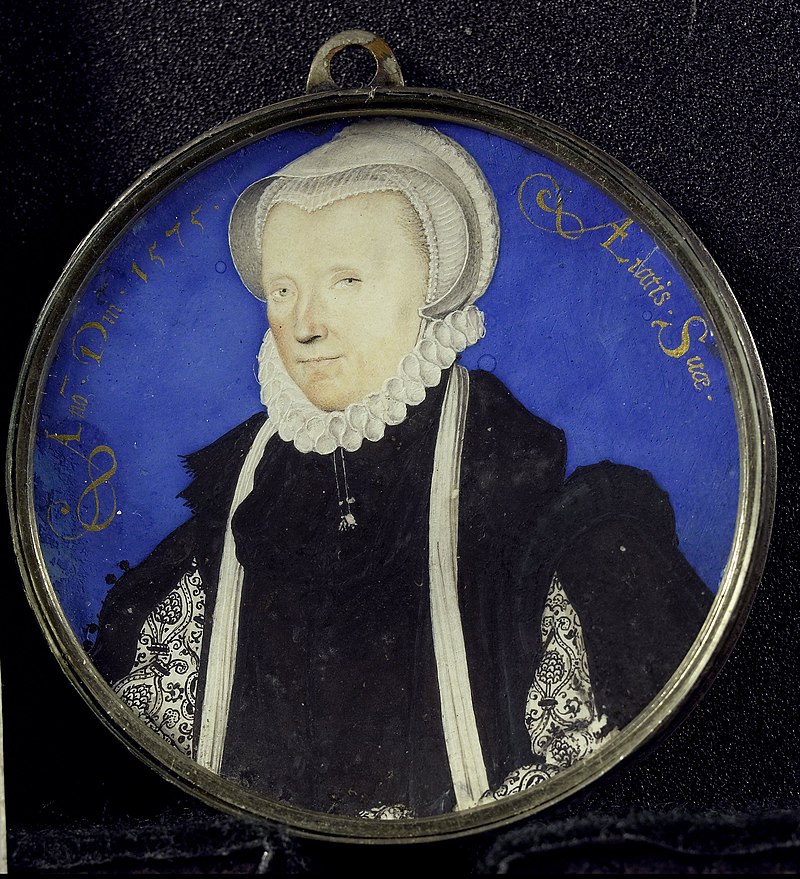
Lady Margaret Douglas; Credit – Wikipedia
Lady Margaret Douglas was third in the line of succession to the English throne at the time of her birth. Her elder son was Henry Stuart, Lord Darnley who married his first cousin Mary, Queen of Scots, the daughter and successor of Lady Margaret’s half-brother James V, King of Scots. Darnley and Mary’s son James VI, King of Scots succeeded as King James I of England upon the death of Queen Elizabeth I of England. Margaret and her family suffered the dangerous misfortune of being a threat to the English throne. All British monarchs from King James I onward, and many European royals are the descendants of Lady Margaret Douglas.

Margaret’s mother Margaret Tudor, daughter of King Henry VII of England; Credit – Wikipedia
Born on October 7, 1515, at Harbottle Castle in Harbottle, Northumberland, England, Lady Margaret Douglas was the only child of Margaret Tudor, Dowager Queen of Scots and the second of her third husbands, Scottish noble Archibald Douglas, 6th Earl of Angus. Her mother was the widow of James IV, King of Scots (who was killed at the Battle of Flodden Field in 1513), the daughter of King Henry VII, the first Tudor King of England, and the sister of King Henry VIII of England. Lady Margaret’s paternal grandparents were George Douglas, Master of Angus (also killed at the Battle of Flodden Field), and Elizabeth Drummond. Her maternal grandparents were King Henry VII of England and Elizabeth of York, the eldest daughter of King Edward IV of England. Lady Margaret was christened on October 8, 1515, with Cardinal Thomas Wolsey, the Lord High Chancellor of England and close advisor to the infant Margaret’s uncle King Henry VIII of England, serving as godfather, represented by a proxy.

Margaret’s half-brother James V, King of Scots; Credit – Wikipedia
Lady Margaret had four half-brothers from her mother’s first marriage to James IV, King of Scots but only one survived infancy:
Lady Margaret had been born in England to an English mother and was treated as an English subject. At the time of Margaret’s birth in 1515, the first three in the line of succession to the English throne were:
- Margaret Tudor, Dowager Queen of Scots (born 1489), elder sister of King Henry VII
- James V, King of Scots (born 1512), son of Margaret Tudor, Dowager Queen of Scots from her first marriage
- Lady Margaret Douglas (born 1515), daughter of Margaret Tudor, Dowager Queen of Scots from her second marriage
Sometime after the birth of their daughter, Margaret Tudor and her second husband Archibald Douglas, 6th Earl of Angus went to London where they were well treated by Margaret’s brother King Henry VIII of England. They lived in Scotland Yard, the traditional residence of Scottish diplomats and Scottish kings while visiting London. During their stay in London, King Henry VIII’s first child Mary Tudor, the future Queen Mary I of England, was born to his first wife Catherine of Aragon, and Mary Tudor was now the heir presumptive to the English throne.

Margaret’s father Archibald Douglas 6th Earl of Angus; Credit – Wikipedia
In 1517, Lady Margaret and her parents returned to Scotland. Her parents became estranged and her father had a daughter with his mistress. There was an Anglophile sentiment among some Scottish nobility, supported by King Henry VIII of England. This allowed Lady Margaret’s father Archibald Douglas to carry out a coup d’état in 1525. Her thirteen-year-old half-brother James V, King of Scots was placed under Archibald’s supervision in Edinburgh. Archibald’s relatives and associates were appointed to high political offices. This caused discontent among the Scottish nobility but all attempts to rebel against Archibald were crushed.
Meanwhile, Margaret Tudor transferred her affections to Henry Stewart, 1st Lord Methven. On March 11, 1527, Pope Clement VII granted Margaret Tudor a divorce from Archibald Douglas, 6th Earl of Angus. Margaret and Henry Stewart, 1st Lord Methven were married on March 3, 1528. The marriage produced a daughter, Dorothea Stewart, born circa April 1528, who died in infancy. At the end of March 1528, Margaret Tudor and Methven were besieged by Archibald and some of his Douglas relatives at Stirling Castle in Stirling, Scotland. A few weeks later, James V, King of Scots escaped from custody and took refuge at Stirling Castle. James V issued an order that his former stepfather Archibald Douglas, 6th Earl of Angus, and all the Douglases were forbidden to come within seven miles of him.
Lady Margaret’s father wanted to flee Scotland and he sought refuge with brother-in-law King Henry VIII in England. Under the terms of her parents’ divorce, Lady Margaret remained legitimate and was fourth in the line of succession to the English throne. She was considered a desirable potential bride and her father used this to his advantage. Lady Margaret was taken from her mother and sent to England as a goodwill gesture to her uncle King Henry VIII who ignored his sister’s pleas to return her daughter.

Lady Margaret’s first cousin Mary Tudor; Credit – Wikipedia
Accompanied by her governess Isobel Hoppar, Lady Margaret joined the household of her godfather Cardinal Thomas Wolsey. After the death of Cardinal Wolsey in 1530, Lady Margaret joined the household of her first cousin Mary Tudor, the future Queen Mary I of England. Because of her place in the line of succession to the English throne, Lady Margaret continued to be brought up at the English court with her first cousin Mary Tudor, who was only four months younger than Margaret and remained her lifelong friend. Even though Lady Margaret’s father Archibald Douglas, 6th Earl of Angus lived in England for a period of time, Lady Margaret’s uncle King Henry VIII kept her guardianship.
In 1533, when King Henry VIII married Anne Boleyn, Lady Margaret became one of Anne’s ladies-in-waiting. While at Anne’s court, Lady Margaret met Lord Thomas Howard, a younger son of Thomas Howard, 2nd Duke of Norfolk and his second wife Agnes Tilney. Lord Thomas was a half-brother of the well-known Thomas Howard, 3rd Duke of Norfolk (son of the 2nd Duke of Norfolk by his first marriage and the uncle of King Henry VIII’s beheaded wives Anne Boleyn and Catherine Howard), and is often confused with his elder brother. By the end of 1535, Lord Thomas and Lady Margaret had fallen in love and become secretly engaged.
King Henry VIII was enraged when he found out about Lady Margaret and Lord Thomas because of Lady Margaret’s place in the line of succession. Lady Margaret and Thomas were sent to the Tower of London. In July 1536, an Act of Attainder was passed in Parliament against Lord Thomas Howard accusing him of interrupting and impeding the succession of the crown. Lord Thomas was sentenced to death but the execution was never carried out. While at the Tower of London, Lady Margaret became quite ill and was allowed to be moved to Syon Abbey under the supervision of the abbess. On October 29, 1537, Lady Margaret was released from Syon Abbey. Two days later, Lord Thomas Howard died at the Tower of London from an illness, although there was speculation that he was poisoned.
In 1540, Lady Margaret again angered King Henry VIII when she had an affair with a gentleman at the court, Charles Howard, the son of Lord Edmund Howard (Lord Thomas Howard’s half-brother) and brother of King Henry VIII’s fifth wife Catherine Howard. In 1543, Lady Margaret was one of the few witnesses of King Henry VIII’s sixth and final marriage to Catherine Parr, at Hampton Court Palace. Lady Margaret had known Catherine Parr since they had both come to court in the 1520s, and became one of Catherine Parr’s chief ladies.

Margaret’s husband, Matthew Stewart, 4th Earl of Lennox; Credit – Wikipedia
By 1544, it seemed as if 29-year-old Lady Margaret would never be married. Instead of invading Scotland, King Henry VIII decided to build Scottish support for a marriage between his only son and heir, the future but short-reigned King Edward VI, and the year-old Mary, Queen of Scots which would unite the crowns of England and Scotland. The marriage never happened and the possibility of the marriage caused a war called the Rough Wooing. Lady Margaret was to be a pawn in her uncle’s plan. King Henry VIII offered his niece as a bride to Matthew Stewart, 4th Earl of Lennox, one of Scotland’s leading noblemen and a descendant of James I, King of Scots.
King Henry VIII generously allowed Lady Margaret and Lennox to accept or reject the marriage once they met. Lady Margaret and Lennox were equally delighted with each other. They were married on June 29, 1544, in the presence of King Henry VIII and Queen Catherine Parr.

Margaret’s two surviving children Charles Stuart, 5th Earl of Lennox and Henry Stuart, Lord Darnley; Credit – Wikipedia
Lady Margaret, now Countess of Lennox and Matthew Stewart, 4th Earl of Lennox had eight or nine children, probably four sons and four (unnamed daughters) but only two sons survived childhood:
- Henry Stuart (born and 1544), died shortly after birth
- Henry Stuart, Lord Darnley (1546 – 1567), married Mary, Queen of Scots, had one son James VI, King of Scots who later succeeded the childless Queen Elizabeth I of England as King James I of England
- Philip Stuart (born and died 1556)
- Charles Stuart, 5th Earl of Lennox (1557 – 1576), married Elizabeth Cavendish, had one child Lady Arbella Stuart, considered a possible successor to Queen Elizabeth I
During the reign of her first cousin Queen Mary I of England, Margaret had rooms at the Palace of Westminster in London. While Margaret had been removed from the line of succession in the wills of her uncle King Henry VIII and first cousin King Edward VI, Queen Mary I thought that Margaret was best suited to succeed her but was ultimately convinced that it would be problematic. Margaret was the chief mourner at Queen Mary’s funeral in December 1558. After her first cousin Queen Elizabeth I succeeded to the throne, Margaret spent much more time at her home Temple Newsam in Leeds Yorkshire, England. Margaret remained Roman Catholic and her home became a center for Roman Catholics.
Meanwhile, in France in 1560, where 18-year-old Mary, Queen of Scots had lived since she was five years old, her husband of two years, 16-year-old King François II of France died after a reign of only seventeen months. Left a childless widow, Mary decided to return to Scotland. She needed a husband to provide an heir to the throne of Scotland. Margaret Douglas, calculating her political possibilities, realized that her elder surviving son 15-year-old Henry Stuart, Lord Darnley, was a potential groom for his first cousin Mary, Queen of Scots. Darnley and Mary had already met in 1559 when Margaret had sent her son to congratulate King François II of France on his accession to the French throne. Margaret wrote to Mary about a possible marriage, and the Queen of Scots was intrigued. Mary and Darnley were married at Holyrood Palace in Edinburgh, Scotland on July 29, 1565. The marriage angered Queen Elizabeth I who felt that Darnley, as her cousin and an English subject, needed her permission to marry. Because of her involvement in the marriage, Margaret was sent to the Tower of London.

Henry Stuart, Lord Darnley and Mary, Queen of Scots; Credit – Wikipedia
Darnley and Mary, Queen of Scots had one son:
Mary, Queen of Scots soon became disillusioned by Darnley’s uncouth behavior and his insistence upon receiving the Crown Matrimonial which would make him co-sovereign of Scotland. Mary refused and their relationship became strained. At the end of 1565, Mary became pregnant. Darnley was jealous of Mary’s friendship with her private secretary David Riccio, rumored to be the father of her child, and formed a conspiracy to do away with Riccio. On March 9, 1566, Riccio was at supper with Mary and her ladies at Holyrood Palace. The conspirators, led by Darnley, burst into the room, dragged Riccio away, and killed him in an adjoining room. Mary was roughly pushed and shoved and although the conspirators hoped she would miscarry, she did not. All the conspirators were banished except for Darnley who was forgiven.
Mary’s marriage was all but over and she began to be drawn to James Hepburn, 4th Earl of Bothwell. Bothwell entered into a conspiracy with Archibald Campbell, 5th Earl of Argyll and George Gordon, 5th Earl of Huntly to rid Mary of her husband. On February 10, 1567, Darnley was killed when the house he was staying at was blown up.

Margaret and her husband with their son Charles and grandson James VI of Scotland mourning Henry Stuart, Lord Darnley; Credit – Wikipedia
After the murder of her son, Margaret was released from the Tower of London. Margaret’s husband Matthew Stewart, 4th Earl of Lennox pursued justice against the Scottish lords who had conspired in the murder of their son Henry Stuart, Lord Darnley. He also became the main witness against Mary, Queen of Scots due to her possible involvement in Darnley’s murder. On July 24, 1567, Mary, Queen of Scots was forced to abdicate in favor of her one-year-old son James VI, King of Scots. James Stewart, 1st Earl of Moray, the illegitimate brother of Mary, Queen of Scots, served as Regent for his young nephew until his assassination in 1570. After Moray’s assassination, King James VI’s paternal grandfather Margaret’s husband Matthew Stewart, 4th Earl of Lennox served as his grandson’s Regent. However, on September 3, 1571, supporters of Mary, Queen of Scots broke into the Regent’s residence in Stirling, Scotland, and killed Lennox. Margaret was now a widow.
In 1574, Margaret’s son Charles Stuart, 5th Earl of Lennox married Elizabeth Cavendish, daughter of Elizabeth Hardwick (known as Bess of Hardwick), a notable figure of Elizabethan society, and her first husband Sir William Cavendish. At the time of the marriage, Bess of Hardwick was married to her second husband George Talbot, 6th Earl of Shrewsbury. The marriage took place without Shrewsbury’s knowledge, who was aware of the suggested match but declined to accept any responsibility. Because Margaret’s son Charles Stuart, 5th Earl of Lennox had a claim to the English throne, the marriage was considered potentially treasonous because Queen Elizabeth I’s consent had not been obtained. Margaret was again sent to the Tower of London. She was released after the death of her son Charles Stuart, 5th Earl of Lennox in April 1576 from tuberculosis.

Tomb of Margaret Douglas, Countess of Lennox in Westminster Cathedral; Credit – Wikipedia
Lady Margaret Douglas, Countess of Lennox died, aged 62, in London, England on March 7, 1578. A few days before her death, Margaret dined with Queen Elizabeth I’s favorite Robert Dudley. After her death, rumors swirled that Dudley had poisoned her, although there is no evidence for this. Margaret’s first cousin Queen Elizabeth I arranged a magnificent funeral at Westminster Abbey where Margaret was buried with her son Charles in the Henry VII Chapel. A monument was commissioned by her executor and former servant Thomas Fowler. Her alabaster effigy wears a French cap and ruff and a red fur-lined cloak, over a dress of blue and gold. On either side of the tomb chest are weepers of her four sons and four daughters.
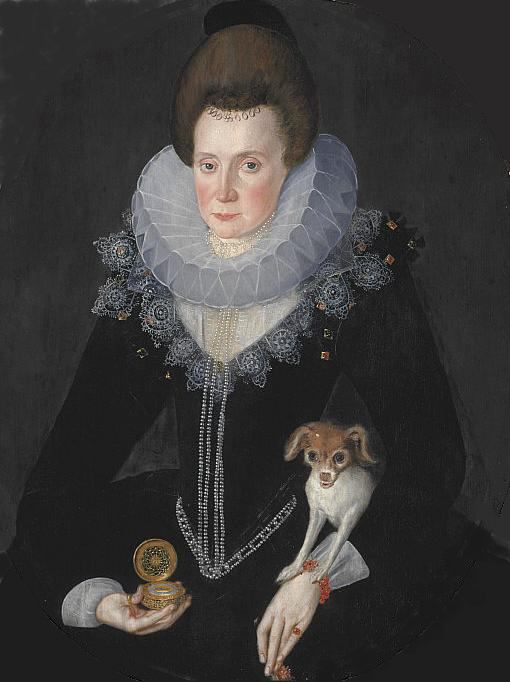
Margaret’s unfortunate granddaughter Lady Arabella Stuart; Credit – Wikipedia
The potentially deadly problems for heirs to the throne followed Margaret’s granddaughter Lady Arabella Stuart, the only child of her son Charles. Arabella was then fourth in line to the succession to her second cousin to James VI, King of Scots (later King James I of England), through their great-grandmother Margaret Tudor. Arabella had been considered a possible successor to the childless Queen Elizabeth I. During the reign of King James VI and I, Arabella was married on June 22, 1610, without the King’s permission, to William Seymour, 2nd Duke of Somerset. Seymour was another claimant to the English throne, sixth in the line of succession. Seymour was the grandson of Lady Katherine Grey, a sister of Lady Jane Grey, giving him a claim to the throne through Katherine’s descent from Mary Tudor, younger sister of King Henry VIII.
King James I considered Arabella’s marriage a threat to the ruling dynasty. William Seymour, 2nd Duke of Somerset was condemned to life imprisonment in the Tower of London and Arabella was placed under house arrest. In June 1611, Seymour escaped from the Tower of London and planned to meet Arabella who had escaped her house arrest, and then flee together to continental Europe. However, Arabella was captured and imprisoned in the Tower of London. Seymour managed to make it to Ostend, Flanders, now in Belgium. Arabella was kept in the Tower of London where she died, aged 40, on September 25, 1615, from illnesses caused by her refusal to eat.
This article is the intellectual property of Unofficial Royalty and is NOT TO BE COPIED, EDITED, OR POSTED IN ANY FORM ON ANOTHER WEBSITE under any circumstances. It is permissible to use a link that directs to Unofficial Royalty.
Works Cited
- Дуглас, Маргарита (Margaret Douglas) (2023) Wikipedia – Russian. Wikimedia Foundation. Available at: https://ru.wikipedia.org/wiki/%D0%94%D1%83%D0%B3%D0%BB%D0%B0%D1%81,_%D0%9C%D0%B0%D1%80%D0%B3%D0%B0%D1%80%D0%B8%D1%82%D0%B0 (Accessed: April 20, 2023).
- DeLisle, Leanda. (2013) Tudor – Passion, Manipulation, Murder. New York: PublicAffairs.
- Flantzer, Susan. (2017) Henry Stuart, Lord Darnley, King Consort of Scots, Unofficial Royalty. Available at: https://www.unofficialroyalty.com/henry-stuart-lord-darnley/ (Accessed: April 20, 2023).
- Flantzer, Susan. (2016) James V, King of Scots, Unofficial Royalty. Available at: https://www.unofficialroyalty.com/james-v-king-of-scots/ (Accessed: April 20, 2023).
- Flantzer, Susan. (2015) King James VI of Scotland/King James I of England, Unofficial Royalty. Available at: https://www.unofficialroyalty.com/king-james-vi-of-scotlandking-james-i-of-englan/ (Accessed: April 20, 2023).
- Flanzter, Susan. (2017) Margaret Tudor, Queen of Scots, Unofficial Royalty. Available at: https://www.unofficialroyalty.com/margaret-tudor-queen-of-scotland/ (Accessed: April 20, 2023).
- Flantzer, Susan. (2016) Mary, Queen of Scots, Unofficial Royalty. Available at: https://www.unofficialroyalty.com/mary-queen-of-scots/ (Accessed: April 20, 2023).
- Lady Arbella Stuart (2023) Wikipedia. Wikimedia Foundation. Available at: https://en.wikipedia.org/wiki/Lady_Arbella_Stuart (Accessed: April 20, 2023).
- Margaret Douglas (2023) Wikipedia. Wikimedia Foundation. Available at: https://en.wikipedia.org/wiki/Margaret_Douglas (Accessed: April 20, 2023).
- Margaret Douglas: Life Story (2015) Tudor Times. Available at: https://tudortimes.co.uk/people/margaret-douglas-life-story (Accessed: April 20, 2023).
- Matthew Stewart, 4th Earl of Lennox (2023) Wikipedia. Wikimedia Foundation. Available at: https://en.wikipedia.org/wiki/Matthew_Stewart,_4th_Earl_of_Lennox (Accessed: April 20, 2023).
- William Seymour, 2. Duke of Somerset (2023) Wikipedia – German. Wikimedia Foundation. Available at: https://de.wikipedia.org/wiki/William_Seymour,_2._Duke_of_Somerset (Accessed: April 20, 2023).







